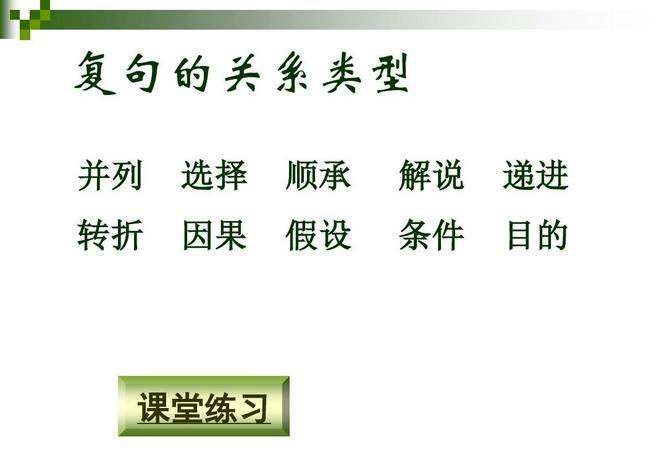英语中的顺承、并列和转折连接词用于表达句子之间的关系。顺承连接词(如because, since, as等)表示因果或逻辑关系;并列连接词(如and, or, but等)表达同等重要或相互独立的句子之间的关系;转折连接词(如although, but, however等)表示句子之间的相反或对比关系。

顺承
顺承是指在文章中使用连接词来表达两个句子之间的因果或逻辑关系。常用的顺承连接词有:because, since, as, for, therefore, hence等。
例如:
-
I couldn't go to the party because I was sick.
-
Since it's raining outside, we should stay indoors.
-
As he is the oldest in the family, he has more responsibilities.
-
I'm studying hard for my exams, for I want to get good grades.
-
I have a lot of work to do; therefore, I can't go out tonight.
-
We missed the train, hence we had to take the bus.
并列
并列是指在文章中使用连接词来表达两个同等重要或相互独立的句子之间的关系。常用的并列连接词有:and, or, but, yet, so等。
例如:
-
I like to read books and watch movies.
-
You can choose to eat pizza or sushi for dinner.
-
I want to go to the party, but I have to finish my homework first.
-
She is very smart, yet she is not very confident.
-
I'm tired, so I'm going to bed early tonight.
转折
转折是指在文章中使用连接词来表达两个句子之间的相反或对比关系。常用的转折连接词有:although, even though, but, yet, however等。
例如:
-
Although it was raining, we still went for a walk.
-
Even though he is very rich, he is not happy.
-
I want to go to the party, but I have to study for my exams.
-
She is very smart, yet she struggles with social skills.
-
I studied hard for the test; however, I still didn't get a good grade.

